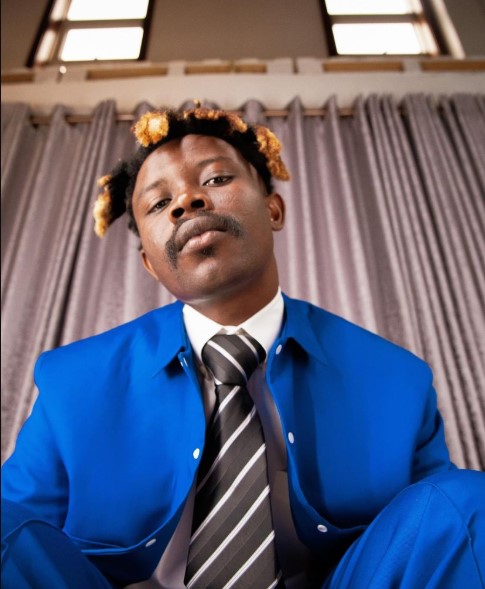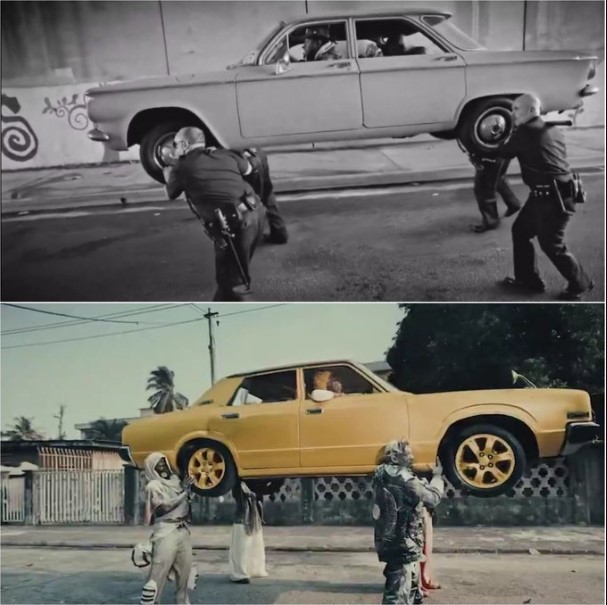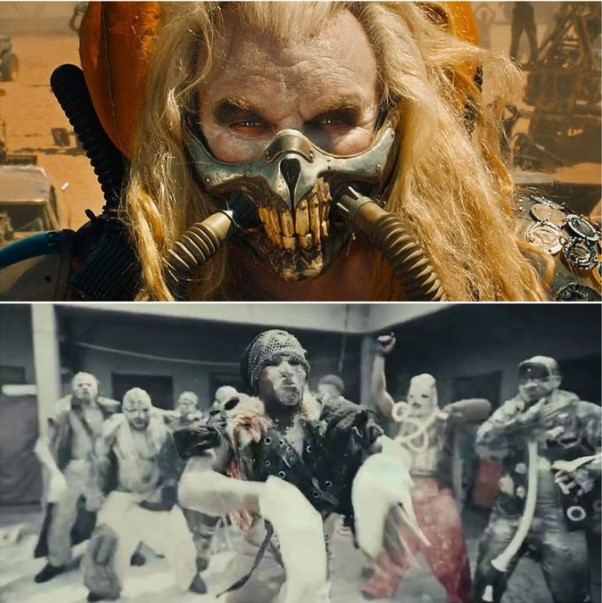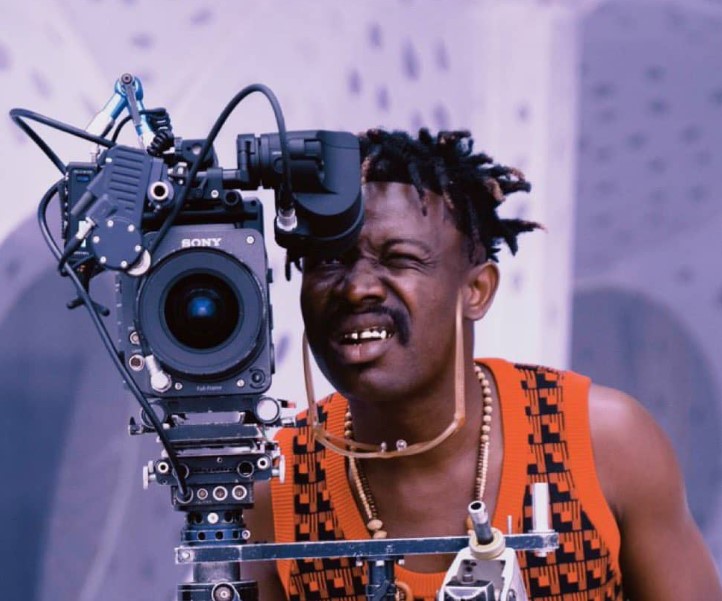I’ve always believed that inspiration is the backbone of creativity. Every great artist like TG Omori takes ideas from the past but the real skill is in making those references feel fresh and meaningful. When done right, it adds depth to the work. When it’s just a copy-paste job, I don’t know, it feels empty… like some sort of soulless remake of something we’ve already seen.
That’s exactly how I feel about Seyi Vibez latest video for Shaolin directed by TG Omori. It dropped recently, it’s TG Omori his first video (if I’m not mistaken) since he made it public that he’s been having some health challenges, but I’m glad he’s back on his feet, so I was really looking forward to seeing what he had cooked up.

But honestly? I think this one missed the mark. Don’t get me wrong, the video is visually appealing but looking further, it feels like a collection of borrowed ideas that don’t really connect.
Referencing: A Powerful Tool When Done Right
Before diving into Shaolin, let’s talk about referencing in general.
Filmmakers like Quentin Tarantino, Martin Scorsese, and the late Jean-Luc Godard have made entire careers out of referencing older films, but their approach is never mindless. Tarantino, for example, doesn’t just copy martial arts sequences from classic kung fu films, he remixes them, adding his own storytelling layers. Scorsese doesn’t just recreate gangster movies and stuff, he injects them with deeply personal themes about morality, power, and consequence.
So basically yeah, the best references are meaningful. They either:
- Add a new perspective to the original material.
- Serve a purpose in the narrative or visual storytelling.
- Enhance the emotions or themes of the work.
That’s why Kendrick Lamar’s music videos are so impactful. When Kendrick references something, there’s a message behind it. In Alright, the shot of him being carried in a car by four policemen isn’t just a cool aesthetic—it’s a critique of police brutality and racial inequality in America. Every frame in that video is loaded with meaning, which is why it remains one of the most powerful visuals in hip-hop history.
But then we get to Shaolin…
TG Omori: Referencing in Shaolin—Substance or Just Vibes?
On the surface, Shaolin is a visually impressive music video. The cinematography is slick, the color grading is top-notch, and the energy is undeniable. But scratch beneath the surface, and it quickly becomes clear that the references are just that… references, with no deeper significance. A friend of mine made me realize this when I got so carried away with the visuals that I didn’t stop to ask…chill, what exactly does any of this actually even mean?
The King Kunta homage, where the Seyi Vibez floats in mid-air, is visually striking, but why is it there? In Kendrick’s original (where I believe it was referenced from), the exaggerated, theatrical movements were a nod to the funk era, reinforcing the song’s themes of black empowerment and self-celebration. In Shaolin, walahi it’s just… there. Aesthetic for aesthetic’s sake I guess.

The Alright music video reference where Kendrick sits in a car carried by four policemen was one of the most politically charged moments in recent hip-hop history. It symbolized resilience in the face of oppression, defiance against a system designed to suppress. In Shaolin, TG Omori replicates the visual but strips it of meaning. It doesn’t connect to the song’s themes or lyrics in any way. It’s just there because it looks cool.

Then there’s the Mad Max: Fury Road influence. We get post-apocalyptic aesthetics, dusty landscapes, and high-energy chase sequences. Again, it looks great, but what does it add to the song? The original Mad Max film visuals were designed to reflect a dystopian world where survival is brutal and chaos reigns. The video doesn’t translate any of those emotions into its narrative, it’s just borrowing aesthetics with no emotional weight.

The Big Question: Why Is It Even Called Shaolin?
Now, let’s talk about the biggest disconnect: the song title, infact the entire freaking SONG (it bangs though).
So Shaolin immediately evokes thoughts of Chinese martial arts, discipline, ancient wisdom, and cinematic kung fu type shit. If a song is titled Shaolin, least you’d expect some level of connection to Shaolin philosophy, fighting styles, or at the very least, something that references the culture. Instead, the video and funny enough the song lyrics gives us nothing remotely related.
– No monks (just some fast clips of some kids dressed like judo enthusiasts)
– No martial arts sequences.
– No storytelling that ties into the concept of Shaolin.
You May Also Like: SGaWD & JoulesDaKid Ignite the Dancefloor with New Afro-House Banger MUAH
So, what’s the connection? Is it just because the video uses a kanji-inspired font in the title text overlay? If so, that’s laughable and incredibly lazy. Because just imagine your favourites naming a song Spartans and then making a video inspired by Alice in Wonderland, like it just wouldn’t make sense.
The Problem With Surface-Level Referencing
At its core, the issue with Shaolin isn’t that it borrows from Kendrick Lamar or Mad Max. The problem is that it borrows without purpose. Referencing should be more than just a collection of cool shots, it should contribute something to the story, emotion, or meaning of the work.
This is a growing problem in creative industries, where aesthetics are valued more than depth. We’re in an era where directors prioritize “cinematic” shots over meaningful storytelling, where the goal is to go viral rather than to create something lasting. And that’s unfortunate because Nigerian music videos, just as the music itself, have the potential to be so much more, but trust Nigerians… as long as it’s cool and something out of the ordinary that they haven’t seen, they’ll glaze like mad, I mean I’ve seen tweets calling this the music video of the year. (smh)
You May Also Like: C-Unit & Masterkraft Celebrate Nigerian Women with New Single “Asampete”
TG Omori is undoubtedly a talented director, I’m not coming for him in any way. He has the eye, the technical skill, and the ability to create visually stunning work. But with Shaolin, the way he used these references as decoration rather than as storytelling tools na where problem dey. At the end, we ust have a video that looks good but feels empty.
How Can Referencing Be Done Better?
According to what I researched, if an artist wants to reference iconic works, they should ask themselves:
- Why am I referencing this? Is it just because it looks cool, or does it add meaning to my work?
- How does this reference fit into my own artistic vision? Am I just copying, or am I adding something new to it? (btw y’all should read ‘How to steal like an artist’)
- Does it enhance the emotions or themes of my work? If I remove this reference, would my work lose depth, or would it remain the same?
A well-executed reference should feel organic, not forced. If TG Omori had taken the Shaolin concept seriously, he could have crafted something far more impactful—maybe a fusion of Nigerian and Chinese martial arts culture, or a story about discipline and perseverance. Instead, we got a collage of unrelated references that don’t add up to anything meaningful.
Anyways the music video is from a song off Seyi Vibez latest 4-track project ‘Children of Africa’, so I’m just gonna plug this here for y’all to listen
Final Thoughts
At the end of the day, referencing is an art. When done well, it can create some of the most powerful moments in film, music, and visual storytelling. When done lazily, it becomes nothing more than a hollow aesthetic.
Seyi Vibez Shaolin music video directed by TG omori is a missed opportunity. It had all the ingredients to be something unique, but instead, it settled for surface-level coolness over depth. As Nigerian music continues to evolve, let’s hope our visual storytellers push beyond the easy route of easy imitation and lean into true inspiration.
Because if referencing doesn’t add meaning, what’s the point?
Related posts
Subscribe
* You will receive the latest news and updates on your favorite celebrities!


